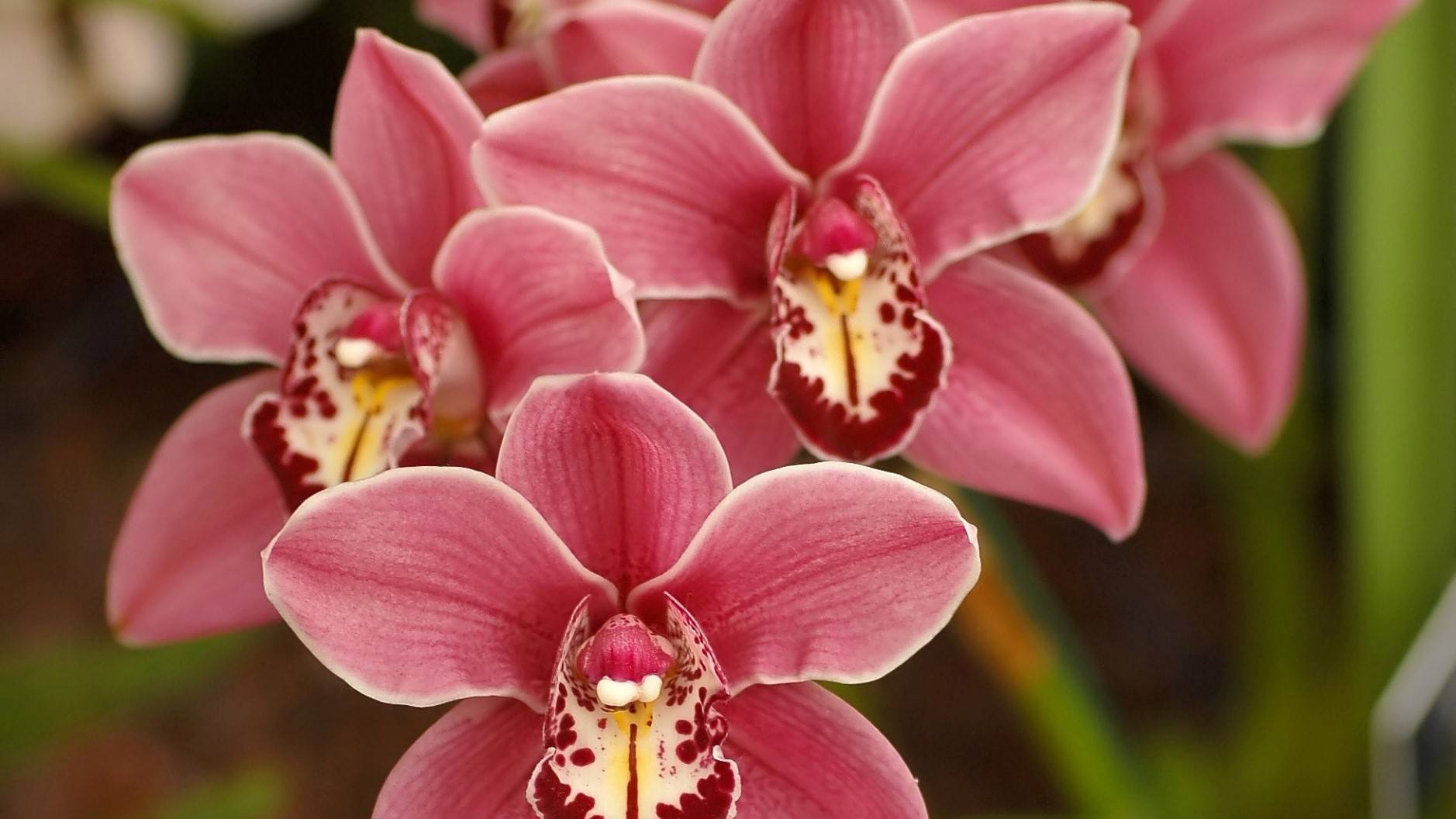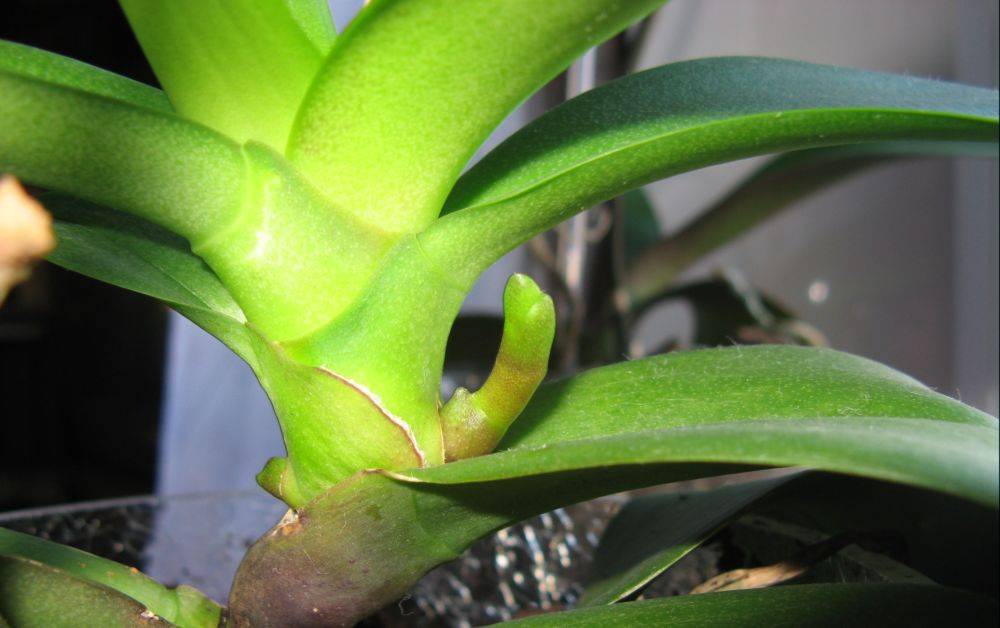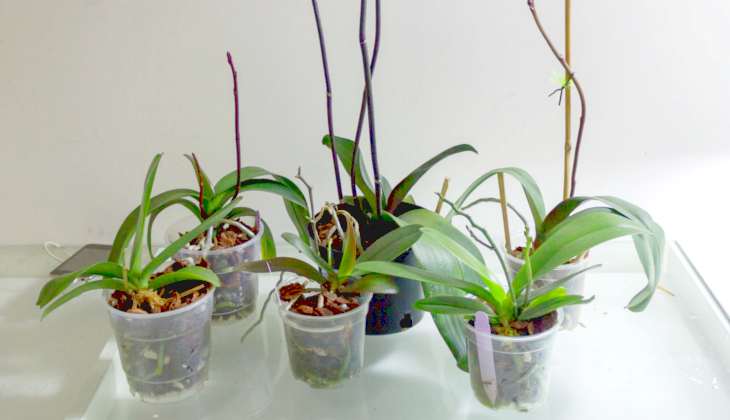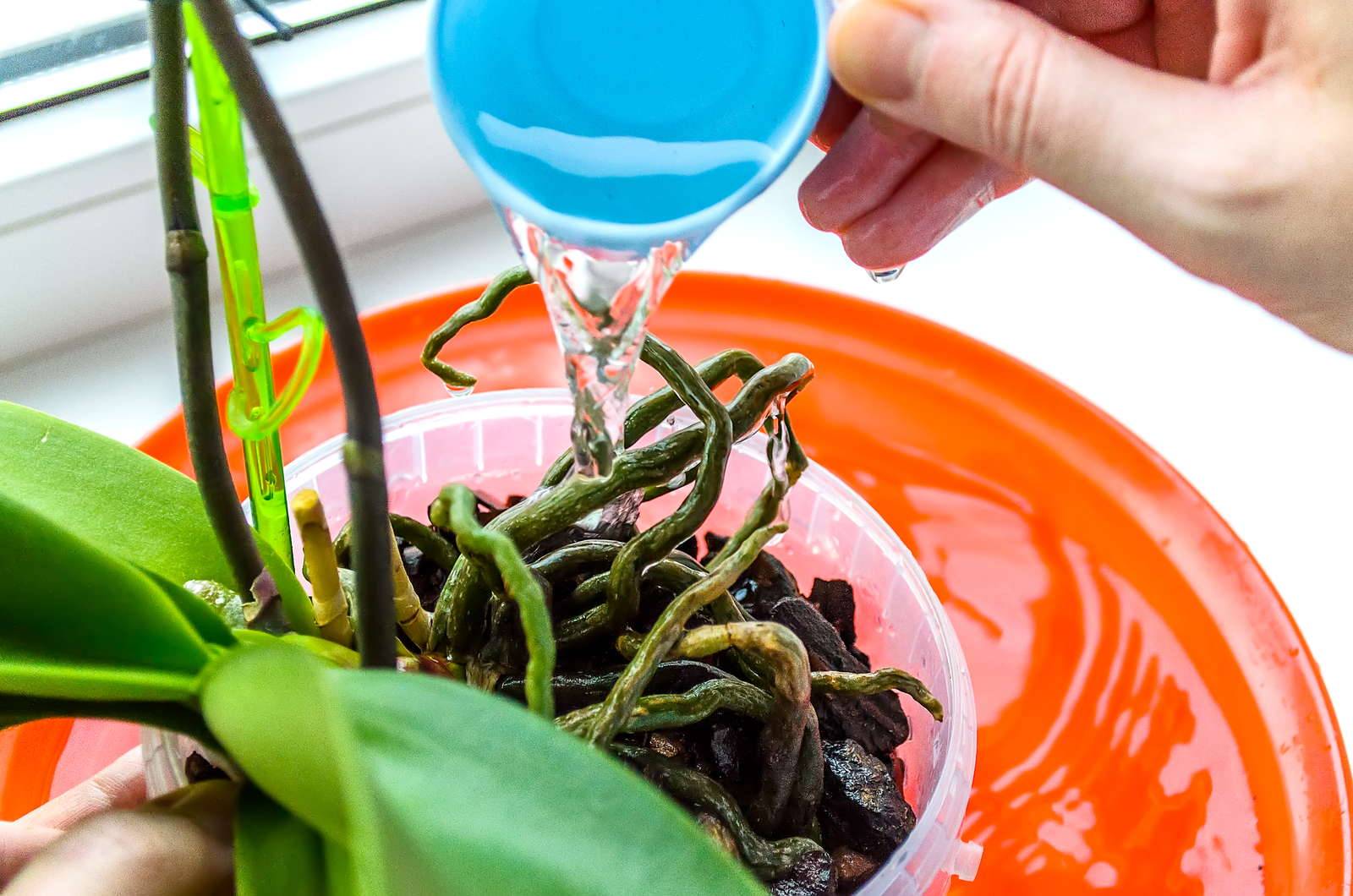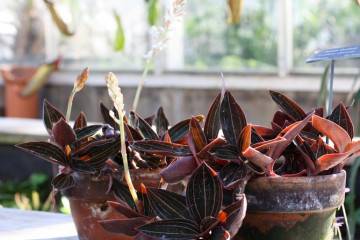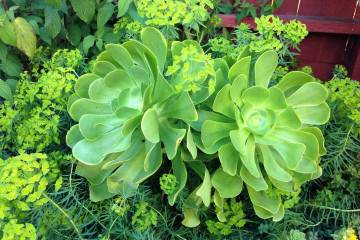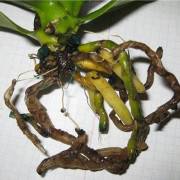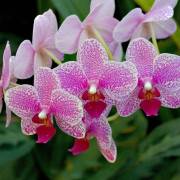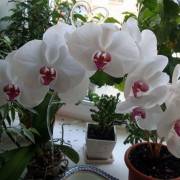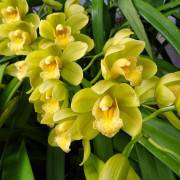The orchid has faded - what to do next with the flower
Content:
All donated or purchased phalaenopsis have a period when the inflorescences dry up. And novice growers do not know what to do with an orchid after flowering. Do not throw out the flower, thinking that it will no longer be able to bloom, because with proper care, you will soon be able to see new buds.
Orchid flowering period
The duration of the flowering of an orchid depends on the type of flower. Some of them can delight with flowers only for 2 weeks, while others - about 3 months. Also, the flowering period depends on the care of the plant, if you do not take into account certain rules, the orchid can shed its buds. If, after that, the florist takes up his mind, reads the rules of care, then he can subsequently wait for the re-flowering, but only if the buds remain on the peduncle.
How to understand that an orchid has completely faded
Not only by the fallen flowers, you can understand that the flowering is over, but also by other signs. The main one is the appearance of the plant. In the normal state, the peduncle has a rich green color, but during the rest period it can change. Most often, the stem is colored pinkish-purple or honey-brown. During this period, it is worth revising the flower care system.
What should be done with the peduncle
The main question for flower growers is what to do with the peduncle after the orchid fades. This should be decided depending on the state of the arrow. If it is completely dry, then the stem must be cut to the lower bud (you should step back from it by 1.5-2 cm). If the peduncle is hollow inside, then it is better to close it with beeswax, this will prevent it from decay.
If only the tip of the arrow remains dry, then only the dry part can be pruned to the first dormant bud. If the peduncle does not fade, you should not cut it off, since buds and flowers will subsequently appear on it.
If the peduncle did not begin to dry, but it had to be cut off, then it can be propagated. To do this, you need to put it in water and wait for the appearance of children. Subsequently, it makes sense to plant them in individual pots in order to increase the number of indoor flowers.
Orchid arrow: trim or not
Not everyone knows what to do with an orchid arrow after flowering at home. Many people strive to cut it off as soon as possible, but this is not always required. If the stem does not dry out, then you can do the following:
- leave everything as it is: if the flower stops growing, then the arrow should be removed, otherwise it can start up shoots or children;
- the peduncle can be shortened if the plant is not weakened, otherwise it can be completely cut off;
- on a branched arrow, it is recommended to shorten the side shoots to give the orchid a neat look.
What to do with the stem
First of all, when the orchid has faded, in order to decide what to do next, you need to inspect the stem. If dormant buds are found on it, then it may not be worth pruning. However, this depends on the type of flower. Dendrobium should be cut only when the pseudobulb dries, and even the green stem can be removed from phalaenopsis.
Cutting the stem is required as follows: the tool must be disinfected, leave a process of about 1 cm, treat the cut with an antiseptic. If pruning is carried out to a dormant bud, then it is recommended to retreat from it up the stem by 1.5-2 cm.Children or processes may subsequently appear from it.
How to transplant an orchid after flowering
Experienced flower growers know that replanting an orchid is worth every 2-3 years. However, if the flower is new, then after it has faded, it makes sense to transplant it. It is worth doing this for several reasons:
- the soil can be depleted by flowering;
- sellers often add a lot of fertilizer to the soil to keep the flower on display longer, which can be harmful to the orchid.
When an urgent transplant is needed
Often the plant has to be saved: its roots can rot due to improper watering, pests appear on the flower, the substrate has become unusable, or the rhizome of the orchid is just cramped in the pot. In this case, it is required to immediately transplant the plant into another soil so that it does not die.
Water hardness is of great importance for the normal life of a flower. If the water contains an increased amount of iron and heavy impurities, this can accelerate the processes of decay and salinity of the substrate. It is recommended to water it with water that has been settled for 1-2 days, since during this time heavy substances will have time to settle to the bottom.
Substrate preparation
When deciding on a transplant, it is required to prepare the soil for the orchid. The easiest way would be to buy a ready-made substrate in a specialized store. Depending on the company, soil mixtures may contain various components, and therefore you need to find out from a specialist which option is more suitable for phalaenopsis.
The main components for preparing the soil: bark of deciduous or coniferous trees, humus, sphagnum moss, peat, perlite or expanded clay. You can get these components yourself, but you need to know the characteristics of your flower variety in order to mix the components in the right proportion.
The most commonly used soil options:
- mix coal, peat, bark and humus in a 1: 1: 1: 3 ratio. Suitable for those types of plants that often need feeding;
- if it is required to reduce the moisture content, then it is necessary to mix charcoal and pine bark in a ratio of 1: 5;
- to prepare a substrate for plants in blocks is made of coal, pine chips and sphagnum moss (1: 5: 2).
The components must be prepared in advance as this may take some time. First of all, you need to soak sphagnum moss in water for a day, this will get rid of insects in it. Then peat and bark need to be crushed, and expanded clay should be taken in the form of crushed stone, and not sand, since it is used as drainage. After that, all the ingredients should be steamed and dried.
Pot selection
It is recommended to choose a transparent plastic pot in order to monitor the condition of the roots (they will also receive some amount of light). You can also choose clay options, but in them the substrate becomes salted faster, and the roots stick to the walls.
Transplant process
The step-by-step transplant process is as follows:
- Fill the new pot by a third with the substrate (do not forget about the drainage).
- Gently remove the plant, shake off the soil from the roots and rinse with warm water. If there are rotten roots, it is worth trimming them to a living place and treating them with an antiseptic (charcoal can act for them).
- Gently spread the roots over the substrate, cover with soil until the aerial roots (they should remain above the soil surface).
Duration of the dormant period after flowering
The dormant period for many orchid species is not defined. This often depends on the flowering time, as well as the conditions created for the flower indoors. However, some species and varieties of this plant may not hibernate at all, such, for example, is Phalaenopsis.
Orchids can have several options for a dormant period:
- pronounced (present in most species). During this period, it is required to lower the air temperature by 5 °, reduce the frequency of watering to 1 time per month. The duration of such a rest differs depending on the variety;
- conditional (for flowers of the Cattleya type). This period requires less water, excludes feeding. Most often occurs after the ripening of the pseudobulb, after flowering;
- dry (at King's dendrobium). Most often, the period starts from mid-autumn to mid-winter, after which flowering begins. This schedule may vary depending on environmental conditions. It is worth giving up frequent watering (once every 3 months), lowering the air temperature by 5 °.
Most often, flowering occurs once a year with a duration from a couple of weeks to several months. The rest of the time they have a dormant period, which should not be disturbed in order to see the newly blooming orchid.
Features of care during the rest period
You need to know how to care for an orchid after it has faded in order to subsequently see the buds on your pet again. Most often, the dormant period occurs in the cold season, and therefore the care system is different.
Watering
Reduce the frequency of watering. During the dormant period, the flower does not need a lot of moisture. It will be more convenient to monitor the state of the substrate if the pot is transparent. The soil should dry out between waterings. Most often, such breaks last at least 1.5 weeks.
If the pot is located in the cold part of the house, it is required to prevent hypothermia of the roots. For this, drainage is used. You can also put styrofoam under the pot.
Spraying and air humidity
Spraying in the cold season is not recommended, since most varieties will react to stagnant moisture by rotting roots. However, it is worth keeping the air humidity above 40%, otherwise pests may appear. You can control this indicator using a humidifier, which should be used for periods, and not constantly.
Temperature regime
Comfortable conditions for an orchid, when the temperature fluctuates around 15-23 ° C. In this case, depending on the time of day, you should ensure that there is a difference of 5 °. This will speed up the flowering process. This can be done by airing the room, but the flower should not be in a draft.
Top dressing
The orchid needs much less fertilization during dormancy, since it will take much longer to use its flower. At this time, feeding is recommended no more than 1 time per month.
The orchid is one of the most beautiful flowers, but after the end of the flowering period it is only a bare stem sticking out among several leaves. To enjoy beautiful flowers more often, it is worth taking proper care of the plant.
